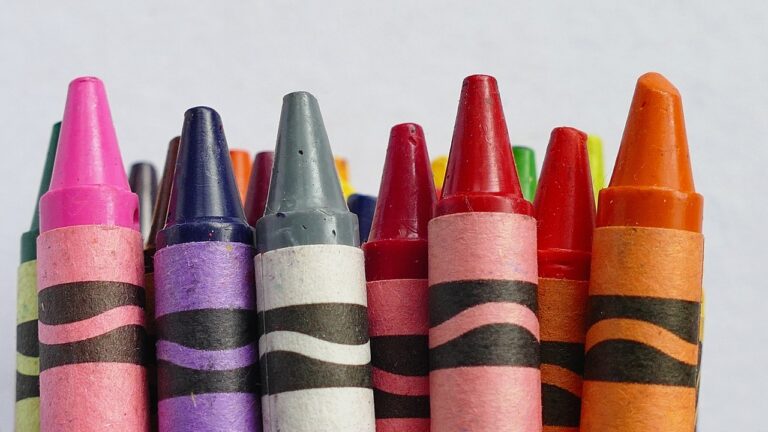The Rise of Kawaii Culture: Japanese Entertainment and Fashion Trends
Kawaii culture in Japan is a significant aspect of the country’s society, influencing various facets of everyday life. Originating from the 1970s, this cultural phenomenon embraces all things cute, from fashion and accessories to food and characters. The concept of kawaii emphasizes innocence, gentleness, and simplicity, appealing to people of all ages.
In Japan, the kawaii aesthetic is not limited to appearances but is also reflected in behavior and communication. People often use polite and soft-spoken language to convey a sense of cuteness and friendliness. The influence of kawaii can be seen in the design of products, advertising, and even the architecture of buildings, contributing to Japan’s reputation as a nation that cherishes youthful and endearing qualities.
Origins of Kawaii Culture
The origins of Kawaii culture can be traced back to the 1970s in Japan. It emerged as a response to the strict societal norms and expectations that prevailed during that time. Young individuals began embracing cute and adorable aesthetics as a way to rebel against the prevailing seriousness.
Sanrio, the creator of Hello Kitty, played a significant role in popularizing Kawaii culture. The introduction of characters like Hello Kitty quickly gained popularity among both children and adults, leading to a surge in the demand for cute products and designs across Japan. This newfound appreciation for all things cute paved the way for the widespread influence of Kawaii culture in various aspects of Japanese society.
Impact of Kawaii Culture on Japanese Entertainment
Kawaii culture’s influence in Japanese entertainment has been undeniable. The use of cute and lovable characters in anime, manga, and video games has captivated audiences both in Japan and globally. These adorable mascots and characters not only bring joy to audiences but also serve as effective marketing tools, creating a strong bond between fans and the brands they represent.
Moreover, the kawaii aesthetic has significantly impacted the fashion industry in Japan. The rise of “kawaii fashion” has brought forth a unique and eye-catching style that has garnered attention worldwide. From Harajuku street fashion to mainstream brands incorporating elements of kawaii into their designs, this aesthetic has become synonymous with Japanese pop culture and has carved out a niche in the global fashion scene.
• The use of cute and lovable characters in anime, manga, and video games has captivated audiences both in Japan and globally.
• Adorable mascots and characters not only bring joy to audiences but also serve as effective marketing tools.
• Kawaii culture creates a strong bond between fans and the brands they represent.
The kawaii aesthetic has also influenced various aspects of Japanese entertainment beyond just fashion. In music, idols often embody the kawaii image, with their youthful appearance and bubbly personalities appealing to a wide audience. Additionally, kawaii themes can be found in movies, TV shows, and even advertising campaigns. This widespread incorporation of kawaii elements showcases its enduring popularity within Japanese entertainment.
Furthermore, the impact of kawaii culture extends beyond just visual aesthetics. It has shaped attitudes towards cuteness in society, influencing behavior and communication styles. The emphasis on kindness, positivity, and innocence that are associated with kawaii have had a profound effect on societal norms in Japan.
Overall, the influence of kawaii culture on Japanese entertainment cannot be overstated. Its reach goes far beyond just being a passing trend; it has become deeply ingrained in various forms of media and is likely to continue shaping the industry for years to come.
What is Kawaii Culture in Japan?
Kawaii culture in Japan refers to the obsession with all things cute, including characters, fashion, and products that are deemed adorable and charming.
What are the origins of Kawaii Culture?
Kawaii culture originated in Japan in the 1970s and was popularized by the rise of cute and whimsical characters like Hello Kitty and Pikachu.
How has Kawaii Culture impacted Japanese entertainment?
Kawaii culture has had a significant impact on Japanese entertainment, influencing the creation of cute and colorful characters in anime, manga, video games, and other forms of media.
Why is Kawaii Culture so popular in Japan?
Kawaii culture is popular in Japan because it appeals to a wide audience, including both children and adults, and provides a sense of escapism and happiness in a busy and stressful world.
Is Kawaii Culture only popular in Japan?
While Kawaii culture originated in Japan, it has gained popularity worldwide and has influenced various aspects of pop culture in other countries as well.





